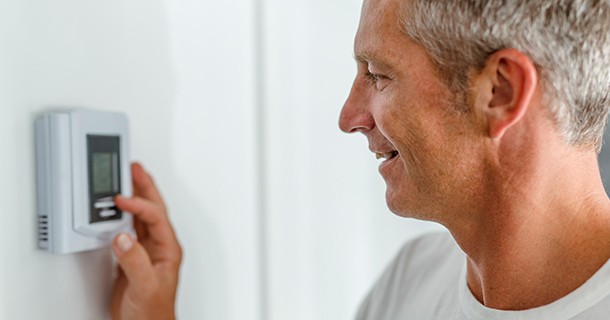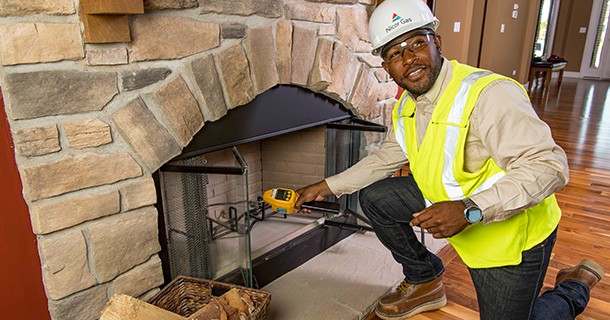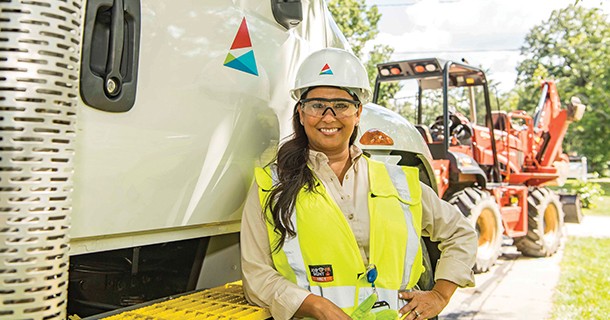Appliance and Equipment Safety
Keep your natural gas appliances and/or equipment in good working condition by following these safety tips:
- Keep your natural gas appliances and equipment maintained and in good working order by having them cleaned and/or inspected for safety once a year by a certified natural gas contractor/HVAC technician. Find one in your area.
- Gas appliances should have proper air circulation at all times.
- A gas flame should burn bright blue. A yellow or orange flame could indicate improper combustion or venting. Have your appliance checked by a certified contractor if you believe your system is not working properly.
- Keep flammable or combustible items away from gas appliances and equipment.
- Use natural gas equipment only for what it's designed to do. For example, you should never use a stove or oven for heating.
- Buy only natural gas equipment that has the American Gas Association Blue Star Seal of Approval, which shows that the appliance meets strict safety standards.
Heating and Venting
According to the Federal Emergency Management Agency:
- It’s important that you have your furnace inspected by a qualified specialist according to manufacturer guidelines to ensure that it is in good working condition. Do not attempt repairs yourself unless you are qualified.
- Be sure all furnace controls and emergency shutoffs are in proper working condition.
- Keep trash and other combustible material away from your heating and water heating systems.
- Keep natural gas vents unobstructed and free of debris. Some direct-vent and high-efficiency appliances have direct side wall outdoor vents and air intakes that could become obstructed during heavy snowfalls.
Signs Your Heating System Needs Attention
- Gas flames that are pale yellow or wavy
- Gas appliances that are not vented to the outdoors
- Rust, corrosion or excessive dust on gas appliances
- Excessively dirty, clogged or missing furnace air filters
- Gas appliance valves that are missing or not properly installed
- Blocked, broken, rusted, disconnected, corroded or unsealed appliance vent piping
- Soot near burners or appliance venting
- Venting not approved by the appliance manufacturer or not venting to the proper place outdoors
- Evidence of discoloration at the appliance burner, burner access door or vent area
- Gas appliances installed in a garage less than 18 inches above the garage floor
- Gas appliances that are missing a fire door
Other Important Heating Tips
- Never use a gas range as a space heater. Doing so can cause carbon monoxide to build-up.
- Put space heaters on a level surface and keep them away from curtains and other flammable objects.
- If you use a natural gas or kerosene space heater, be sure it is vented to the outside.
Regular Maintenance That Is Required
- Clean air filters regularly and replace as needed.
- Ensure furnace panels and grills are in place and that the fan compartment door is closed when the furnace is on. Leaving these doors open can cause carbon monoxide to build up.
- Check to see that the furnace or boiler is free of dust, rust or corrosion.
- Keep the space around the furnace clean and clear.
Hot Water Safety
The U.S. Consumer Product Safety Commission urges all users to lower their water heaters to 120 degrees Fahrenheit (the "warm" or "low" setting on your water heater).
A thermostat setting of 120 degrees Fahrenheit (49 degrees Celsius) may be necessary for residential water heaters to reduce or eliminate the risk of most tap water scald injuries. Consumers should consider lowering the thermostat to the lowest settings that will satisfy hot water needs for all clothing and dish washing machines.
Never take hot water temperature for granted. Always hand test before using, especially when bathing children and infants.
How to test your water temperature:
1. Run the hot water for five minutes.
2. Put a reliable thermometer that registers at least 150 degrees under the water stream.
3. If your water is more than 125 degrees, lower the thermostat on your water heater. If you can't find the temperature controls or have any questions, call a qualified contractor or your landlord for help.




